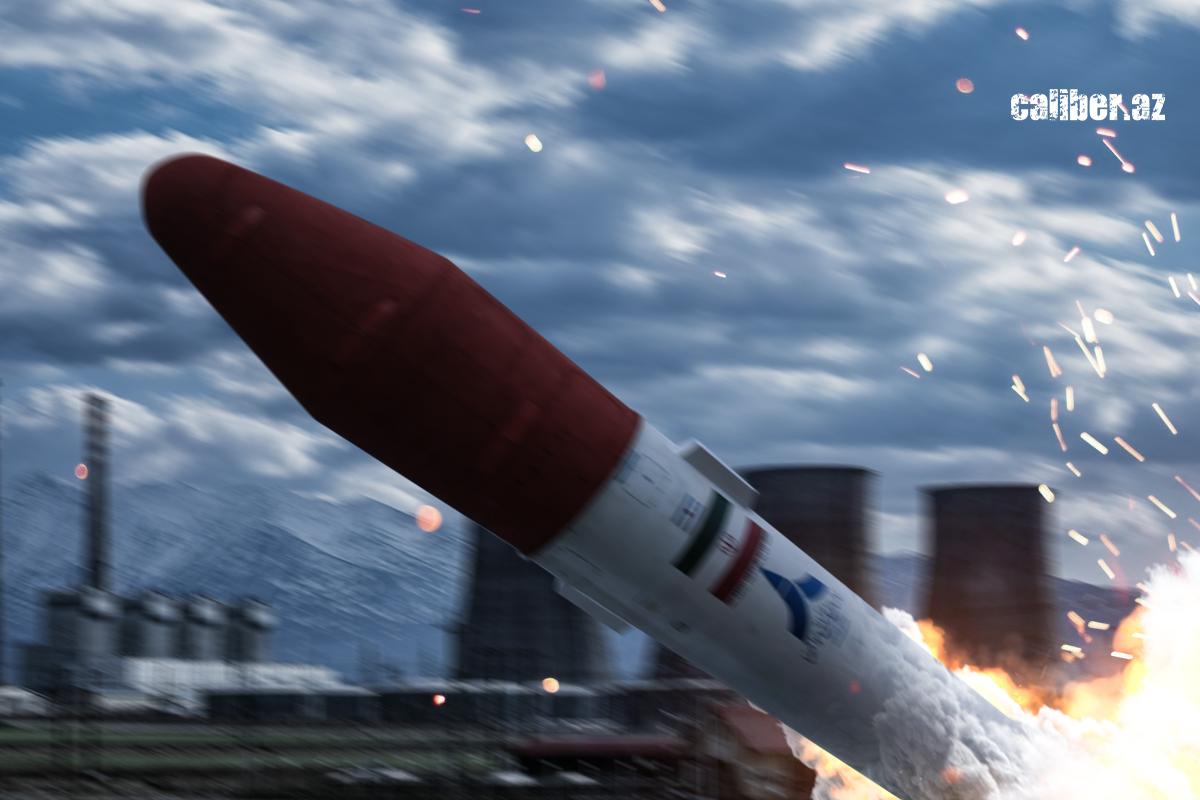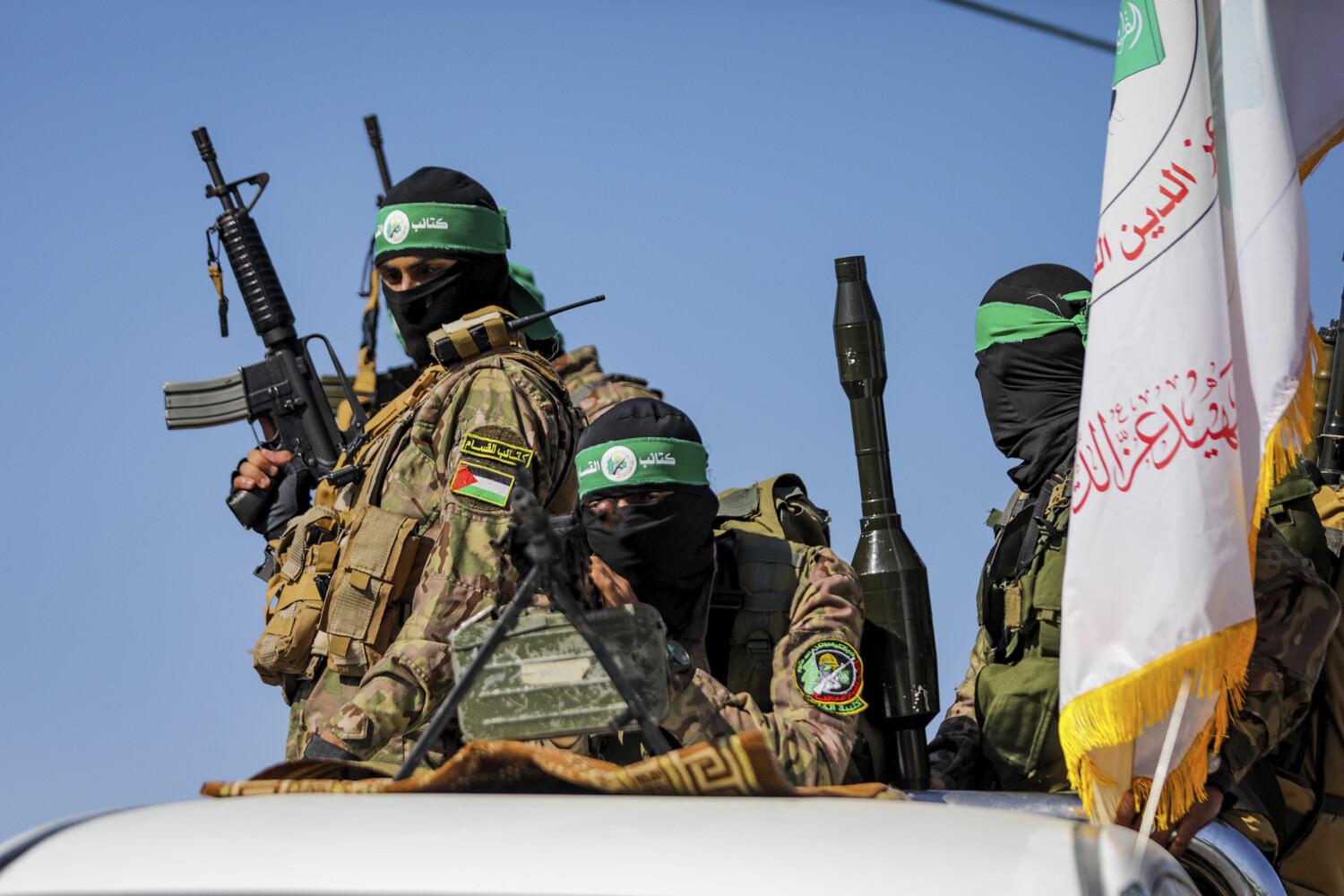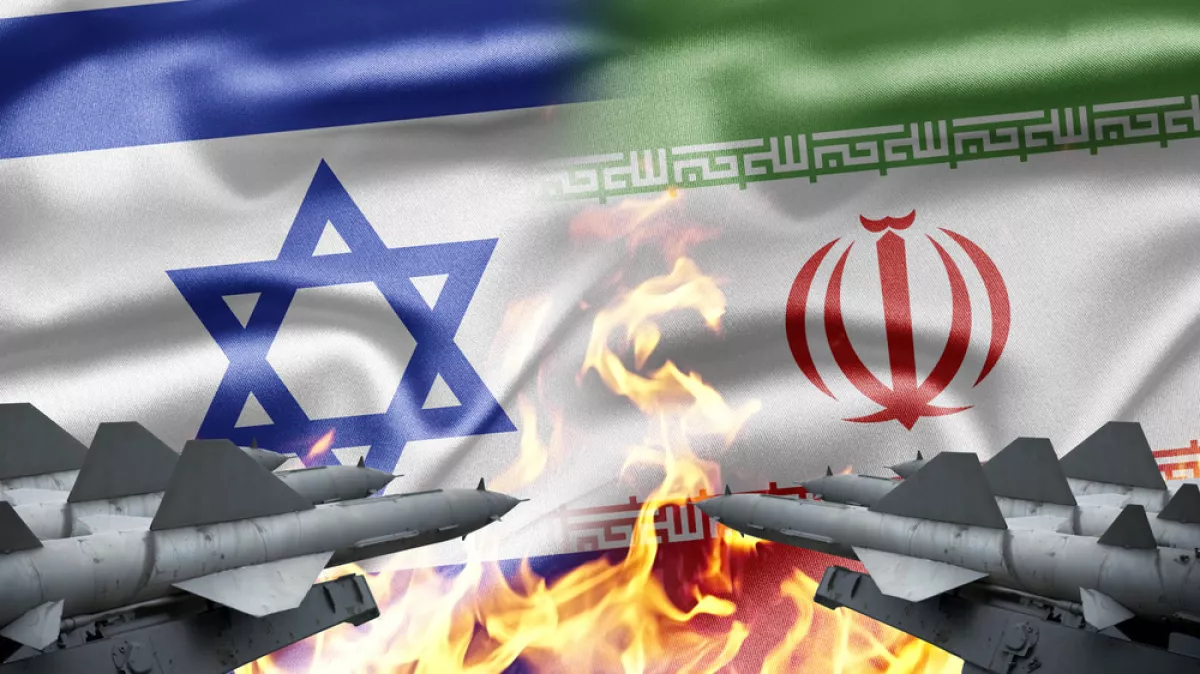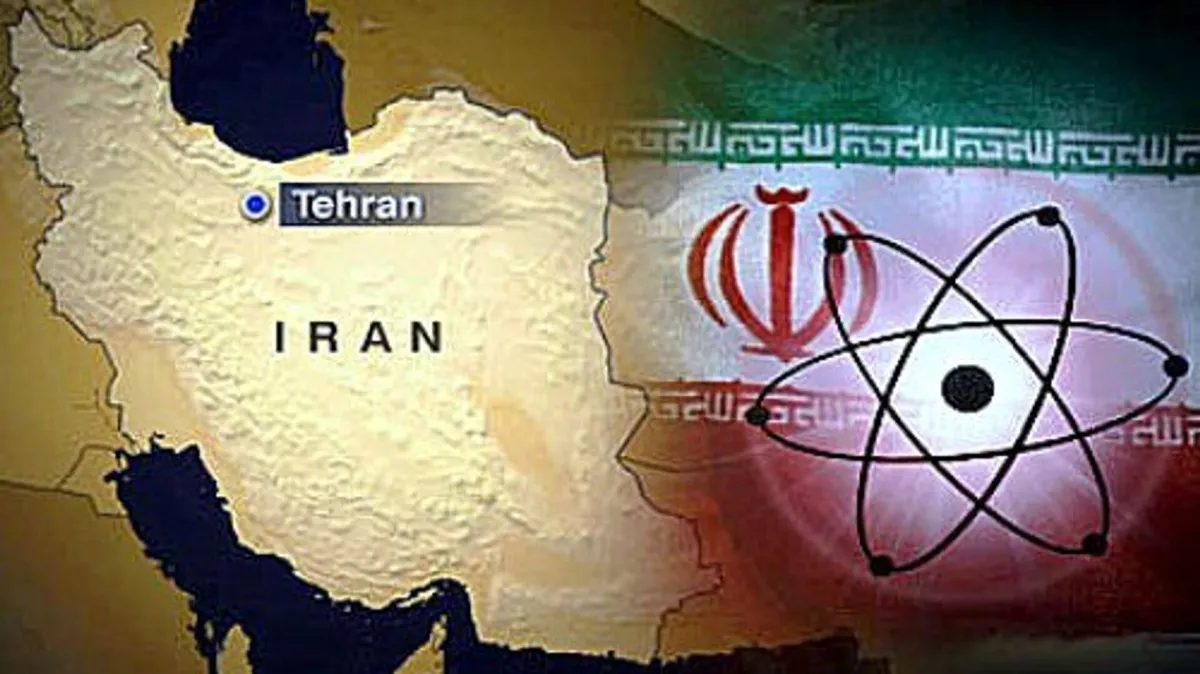Collapse of Axis of Resistance and nuclear threat Iran at the threshold
After the loss of Syria, Iran has become weaker than ever in the last few decades. It may take a desperate step to compensate for its weakness—developing nuclear weapons. In turn, this could lead to preemptive strikes by Israel and the U.S. on Iran's nuclear facilities.
The Axis of Resistance – Iran's allies
Since the early 1980s, Iran has been building a network of allies in the Middle East known as the Axis of Resistance. It has funded and armed predominantly Shiite parties, although it has also supported Sunni Islamist groups such as Hamas and the Palestinian Islamic Jihad. Hezbollah, which holds a controlling share of power in Lebanon with its dominant military strength, the Assad regime in Syria, Shiite militias that have nearly taken control of Iraq today, and the Houthi rebels in Yemen, who control a third of the country, are all friends and allies. These alliances have allowed the Iranian theocracy, led by Supreme Leader Ayatollah Ali Khamenei, to establish an area of influence—a Shiite crescent stretching from Tehran to Beirut. Iranians felt at home in Iraq, moving their businesses there to avoid U.S. sanctions, while managing much of Lebanon and using Syria as the central logistical hub of their empire.
All these forces ensured Iranian dominance over vast territories stretching from the borders of Afghanistan to the Mediterranean Sea. Iran's tentacles—its proxies—could threaten Israel and the U.S., as well as allied countries, engaging in a struggle for dominance over the Middle East. In fact, this struggle was the main cause of the recent Middle Eastern war.
Pro-Iranian militias targeted U.S. bases in Iraq and Syria, aiming to drive U.S. troops out. The Houthis targeted shipping in the Red Sea, disrupting one of the planet's main trade routes, and until recently, these forces launched rockets and drones at Israel as part of Iran's "unity of the resistance front" doctrine. Additionally, militias in Iraq and Yemen, as well as Iranian specialists under their protection, repeatedly shelled the territories of other U.S. allies—Saudi Arabia and the UAE—while making specific demands towards these countries. Israel was asked to stop bombing Gaza, and the Saudis and Emiratis were urged to cease their airstrikes and military operations in Yemen against the pro-Iranian Houthis. Drones, ballistic, and cruise missiles made in Iran were fired at Israelis, Saudis, and ships transiting the Red Sea, most likely launched by Iranian operators.
By orchestrating this network of allies, Tehran remained relatively safe, avoiding direct involvement in military operations and thus ensuring "plausible deniability" of its participation. Not a bad defence! In the U.S., where wars in the Middle East are extremely unpopular following failures in Iraq and Afghanistan, the leadership was reluctant to take risks, fearing involvement in new ventures. Iran itself was not attacking anyone, so the U.S. also refrained from escalating tensions. This seems somewhat strange, however, because the Houthis themselves lack the technology to produce and launch ballistic and cruise missiles. Yet, that was the reality.

The Iranians helped Lebanese Hezbollah build a massive missile arsenal capable of inflicting critical damage on Israel—150,000 rockets, including precision-guided ones, and thousands of drones of various types. Hezbollah became Tehran's strike fist directed at Israel, capable of causing enormous harm. At the same time, it safeguarded Iran's nuclear and missile weapons programs. In the minds of Iran's leadership, the plan was as follows: if Israel launched direct strikes against Iran, Tehran would order Hezbollah to unleash a missile barrage on the Jewish state. If Israel attempted to enter southern Lebanon to neutralize Hezbollah, the Israeli Defense Forces (IDF) would encounter experienced guerrilla fighters equipped with the latest precision weaponry, including the "Almas" anti-tank guided missile, as well as reconnaissance and strike drones. The terrain of southern Lebanon (hills or low mountains covered with forests), ideal for guerrilla warfare, turned Hezbollah's operating areas into an impregnable fortress. Syria, in this scenario, became the main logistical route for supplying Hezbollah with munitions and reinforcements. Knowing all of this, Israel would be hesitant to bomb Iranian nuclear facilities. No matter how much Israel threatened, claiming it would not allow Tehran to acquire nuclear weapons, it couldn't do anything about it.
It seemed like everything was perfectly calculated. Iran projected its influence over the region while staying on the sidelines. It was feared and respected. The empire exerted pressure on the Americans, encouraging them to pull out, scale back their bases, and threatened the Israelis, who, after their unsuccessful Second Lebanon War in 2006, had long been hesitant to engage with Hezbollah. The Saudis and Emiratis restored diplomatic relations with Iran, with Saudi Arabia even offering Tehran a retreat—promising one billion dollars in investments—and announcing the end of its military operation in Yemen against the pro-Iranian Houthis.
The collapse of the Axis of Resistance
Everything fell apart after the Hamas raid from Gaza into Israel on October 7, 2023, when Israel began operations against Iran and its allies.
It cannot be said that Israel emerged unscathed. Hamas suffered heavy losses but continues to hold part of Gaza, demanding the withdrawal of the IDF in exchange for Israeli hostages taken during the October 7 raid. However, the organization has been decimated by about half, and all its experienced leaders are dead.

Hezbollah’s guerrilla forces were able to inflict heavy losses on the IDF and effectively halt its advance in southern Lebanon, but Hezbollah's own losses were catastrophic. The IDF lost 100 soldiers and hundreds more were injured, but Hezbollah's casualties were an order of magnitude higher. As a result of bombings and sophisticated strikes, such as the detonation of pagers, thousands of Hezbollah fighters and nearly all of its leadership were killed or severely injured. Israeli intelligence outmanoeuvred the enemy, while the IDF successfully captured vast weapons caches. Although Hezbollah managed to retain the core of its military and civilian organization, it was seriously weakened. This weakness is further reflected by the fact that it was forced to agree to a ceasefire with Israel, despite having previously claimed that it would only do so if Israel ceased its attacks on Gaza and Hamas—Hezbollah's ally in the Axis of Resistance. Yet, Israel did not stop its bombardment of Gaza and still succeeded in sidelining Hezbollah.
Additionally, Israel killed the head of Hamas' political wing, Ismail Haniyeh, in Tehran, in a heavily guarded guest facility. By doing so, Israel demonstrated that it had penetrated the very heart of the Iranian regime and was likely capable of targeting its highest leadership.
Iran also suffered. After Israel struck the Iranian consulate in Damascus, Iran retaliated with a missile attack on Israeli territory. However, the exchange of several direct strikes between the two sides highlighted Iran's weakness rather than its strength. Iran was unable to inflict any significant damage on Israel, while the Israeli Air Force, using precision-guided weapons, destroyed a significant portion of Iran's air defence systems.

But the greatest defeat for Iran came with the unexpected collapse of Bashar al-Assad’s regime. Israeli strikes weakened and sidelined Hezbollah, which had been helping Assad defend the Aleppo region. This allowed Hayat Tahrir al-Sham (HTS) and the Syrian National Army (SNA) to strike in a series of attacks that led to Assad's regime falling within 10 days.
Now, Hezbollah’s fate is also in question, as Iran and its allies' ability to provide support to Hezbollah has drastically diminished. The core element of the Axis of Resistance, its central logistical hub—Syria—has been removed.
Nuclear Iran?
Iran’s weakness may push it to shift from being a threshold state to one possessing nuclear weapons. Circles close to Iran’s Supreme Leader have begun discussing such a possibility. Some politicians in Tehran believe that only by acquiring nuclear weapons will the country be able to protect itself from external enemies and compensate for the weakness brought on by the collapse of the Axis of Resistance.
Iranian expert Ali Alfoneh points out that the ruling circles in Iran fear the Libyan scenario. As is well known, Libyan dictator Muammar Gaddafi struck a deal with the West. He was promised security and the lifting of sanctions in exchange for abandoning attempts to develop nuclear weapons. Gaddafi accepted the terms, but when an uprising against his regime began in Libya, NATO aircraft destroyed his loyalist military units and ensured the victory of the rebellion. From this, Tehran concluded that it might be better to have nuclear weapons than not to have them. The country is constantly on the brink of an uprising, as evidenced by the powerful protests that shook it in 2017-2019 and 2022.
Until now, Iran has hesitated. It has not taken the final step, although it came very close to developing nuclear weapons. But if it has lost other means of deterring its opponents, and if the Axis of Resistance has weakened, the only option left is to pursue nuclear weapons to restore the balance.

The problem with this approach is that Tehran is unlikely to be allowed to develop a bomb. Israel has demonstrated that its intelligence is well-informed about what is happening in Iran, and it can (and most likely will) launch a preemptive strike.
From Israel’s perspective, the Iranian bomb is a red line. Israel is serious when it speaks about this issue. Last time, its Air Force successfully neutralized or destroyed a significant portion of Iran's air defence systems, thus clearing the battlefield for strikes on Iranian facilities producing centrifuges, enrichment plants capable of refining uranium to levels required for nuclear weapons, and factories producing missiles that could serve as nuclear weapon delivery systems.
The United States is also opposed to Iran's nuclear weapons. The Biden administration will leave office in January and is essentially no longer dependent on voters, so it has full freedom of action. It could participate in an attack on Iran. Moreover, there is another crucial consideration: Israel does not have sufficiently powerful bombs to strike key Iranian nuclear infrastructure hidden in the Fordo mountain facility, whereas the U.S. does have such weapons. As a result, the likelihood of an American or joint Israeli-American strike on Iran has sharply increased in recent days.
But Tehran has also created an additional factor that makes such strikes even more likely. Iran-backed Houthi militants from Yemen continue to launch ballistic missiles at Israel while simultaneously threatening maritime traffic in the Red Sea with cruise missiles and drones. The Houthis, as a tribal militia, lack missile production facilities and are unlikely to have operators capable of launching these missiles. Since everyone understands what is happening, and given Tehran’s weakened position, it is unlikely that Iran will be able to maintain the plausibility of denial in the current circumstances. Recently, Benny Gantz, leader of the opposition "National Unity" party, former defence minister, and former chief of staff of the Israeli army, stated that a strike on Iran should be carried out to resolve the Yemeni issue. This could be seen as a signal to Tehran.
In Israel, there is a consensus among politicians from leading parties and the military regarding Iran's nuclear ambitions. This is a red line. If Israel decides to carry out new strikes on Iran, its primary target will likely be Iran's nuclear program.








